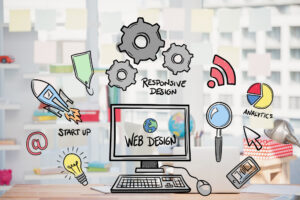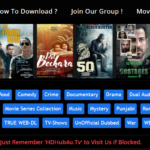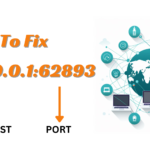How to Build Remote Development Team in 9 Steps
- 1 Step By Step Process to Build Remote Development Team
- 1.1 1. Define Your Project Goals and Team Requirements:
- 1.2 2. Choose the Right Engagement Model
- 1.3 3. Choose a good supplier or sourcing platform
- 1.4 4. Assess Technical and Soft Skills
- 1.5 5. Establish clear channels of communication and collaboration
- 1.6 6. Define the Onboarding Process
- 1.7 7. Define Project Deliverables and Milestones
- 1.8 8. Security and data protection focus
- 1.9 9. Nurture Team Engagement and Culture
- 2 Conclusion
Hiring a dedicated remote development team can scale the business, bringing unique skills on board while maintaining flexibility in project delivery. Global talent pools are now more accessible than ever, and companies have the opportunity to build remote teams with fresh ideas and diverse expertise, bringing robust solutions. Here’s a step-by-step guide on hire dedicated remote development team for your projects.
Step By Step Process to Build Remote Development Team
1. Define Your Project Goals and Team Requirements:
It would be best to outline your project’s goals and scope and elaborate on the requirements before jumping into the hiring process. This includes identifying the required technical skills, expertise, and experience level of the development team; for instance, if you were building a mobile application, the team would need experts in iOS, Android, and backend API development. Similarly, web projects may request experts in front-end frameworks like React or Angular and backend technologies like Node.js or Python.
By creating detailed project documentation, you will clarify expectations with potential candidates and ensure that your project vision aligns with the team from the outset. List core functionalities, required technologies, timelines, and even potential challenges that might come up. This will help you find suitable candidates and allow the remote team to assess their fit for your project better.
2. Choose the Right Engagement Model
A few engagement models can fit varying business needs for remote development teams. The standard three are usually:
- Dedicated Team Model: This model is best for long-term projects because you have the team exclusively working on your project. You can enjoy complete control over the workflow, task, and development. Companies seek close collaboration with teams; hence, this model serves well.
- Time and Material Model: In this flexible approach, you pay for actual hours worked and resources used. This can effectively manage projects with a dynamic scope, where requirements change frequently.
- Fixed-Price Model: Where you have a clearly defined scope and budget for your project, you could pay for the whole project with a fixed price. However, it may not be ideal for projects that require flexibility or are likely to evolve.
Selecting the best model depends on your project’s nature, timeline, budget, and level of control you wish to maintain.
3. Choose a good supplier or sourcing platform
Next on the line is finding reliable talent; here, one has a few options depending on the size and complexity of the project:
- Freelance platforms: Upwork, Freelancer, and Toptal are suitable for hiring individual developers. That works nicely for smaller projects or when building a small team. However, managing many freelancers for more extensive and complex projects is time-consuming.
- Dedicated Remote Development Agencies: They will provide a complete team of developers, designers, and project managers. They usually have a set process and the ability to develop a project from scratch to its final stage so that they would work fine for big or complex projects.
- Staff Augmentation Services: If you have an in-house team and need to augment your resources, you can expand your team with remotely based professionals. Most IT outsourcing firms provide staff augmentation services where you can hire developers flexibly according to your needs.
Research the vendors thoroughly and check their portfolios. Read the testimonials of the clients and ask for case studies. Look for companies or agencies working in your industry or on similar projects.
4. Assess Technical and Soft Skills
Technical competence is a must when hiring a remote development team; therefore, you should research the level of their knowledge of the technologies and frameworks you need. However, it’s not just about technical skills. The reason is that the team will be distributed; thus, good communication, collaboration, and time management skills are the most important.
I would advise doing technical interviews, giving coding tests, and live project simulations to assess their technical capability. Soft skills can be directly observed from past client reviews and situational questions, as well as how responsive they are to the communication style initially.
5. Establish clear channels of communication and collaboration
Effective communication is the backbone of any successful remote team collaboration. Set up your channels in one place for everyday interactions, project updates, and problem-solving. Consider tools like:
- Slack or Microsoft Teams for live messaging
- Zoom or Google Meet for video conferencing
- JIRA or Trello for project management
- GitHub or Bitbucket to collaborate on code
Open up for a formalized rhythm of meetings encompassing daily stand-ups, weekly updates, and monthly review sessions. Be open to communication regarding a structured reporting process in place, keeping everyone on the same page so that any issues will be addressed quickly.
6. Define the Onboarding Process
Develop a process for onboarding new team members, familiarizing them with your company’s culture and the project’s goals and workflow. Onboarding should ideally include the following:
- Orientation Sessions: Hold sessions with the team to orient them with your project’s requirements, target audience, and objectives.
- Tool-specific training: Show them how to use the tools and software they’ll be using for project management, communications, and code repository management.
- Mentorship and Support: Team them up with the team lead or mentor, whoever can help answer questions, solve problems, and guide them through your work processes.
A structured onboarding process will help reduce the learning curve, build engagement, and have the team start contributing to the project more effectively.
7. Define Project Deliverables and Milestones
Break down the project into manageable milestones and assign deliverables with clear deadlines. This will keep the project on track and allow you to appraise the team’s performance effectively, give them feedback, and make necessary changes.
Agile methodology works with remote teams because it is based on iterative progress, fast feedback cycles, and adaptability to changes. Encourage your team to focus on the short term by using sprints while keeping the project’s long-term goals in mind. This approach is very amenable to projects where the requirements are unknown, or the solution has a lot of flexibility.
8. Security and data protection focus
Remote work presents unique challenges, mainly if your project involves sensitive information or personal data. Put in place security protocols that include:
- VPN Access: Make sure that all the members have VPNs for secure connections.
- Access Controls: Utilize tools with multiple permission levels—tuned to roles in your organizations—to protect sensitive information.
- Periodic Security Audits: The security system should be reviewed periodically for flaws.
Ensure the remote staff complies with data protection regulations, such as GDPR, HIPAA, or industry-specific standards.
9. Nurture Team Engagement and Culture
Build a cohesive team culture—even in a remote setup. It is challenging, but you can still make your team feel connected and a part of the group by: Informal Regular Team Meetings: Hold periodical informal meetings where team members may share work updates, personal interests, or hobbies.
Celebrating Milestones: Recognize and celebrate team achievements to boost morale and create a positive work environment. Feedback Loops: Encourage team members to provide feedback on project processes, workflows, and company practices. Also, investment in the team’s culture will make the workplace more enjoyable and increase productivity and retention.
Conclusion
Hire a dedicated remote development team to unlock new potential in your business and access specialized skills with a flexible workforce. Define your project requirements and, by doing so, choose the suitable engagement model; invest in effective communication and collaboration that will enable you to ensure the relationship with your remote team is both productive and rewarding. Embrace these best practices to navigate the process smoothly, and you’ll be well on your way to achieving successful project outcomes.

















